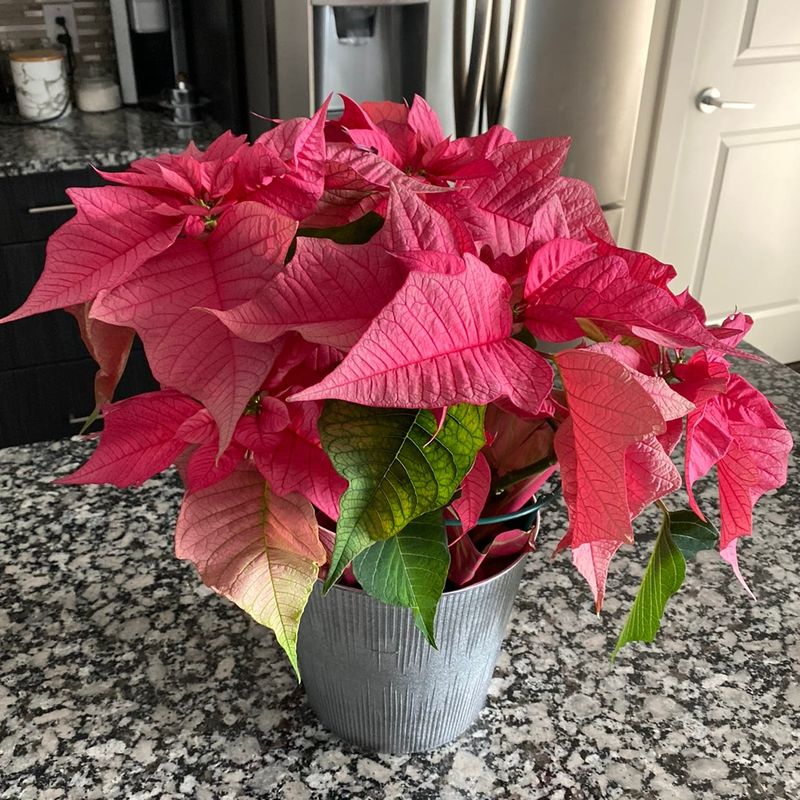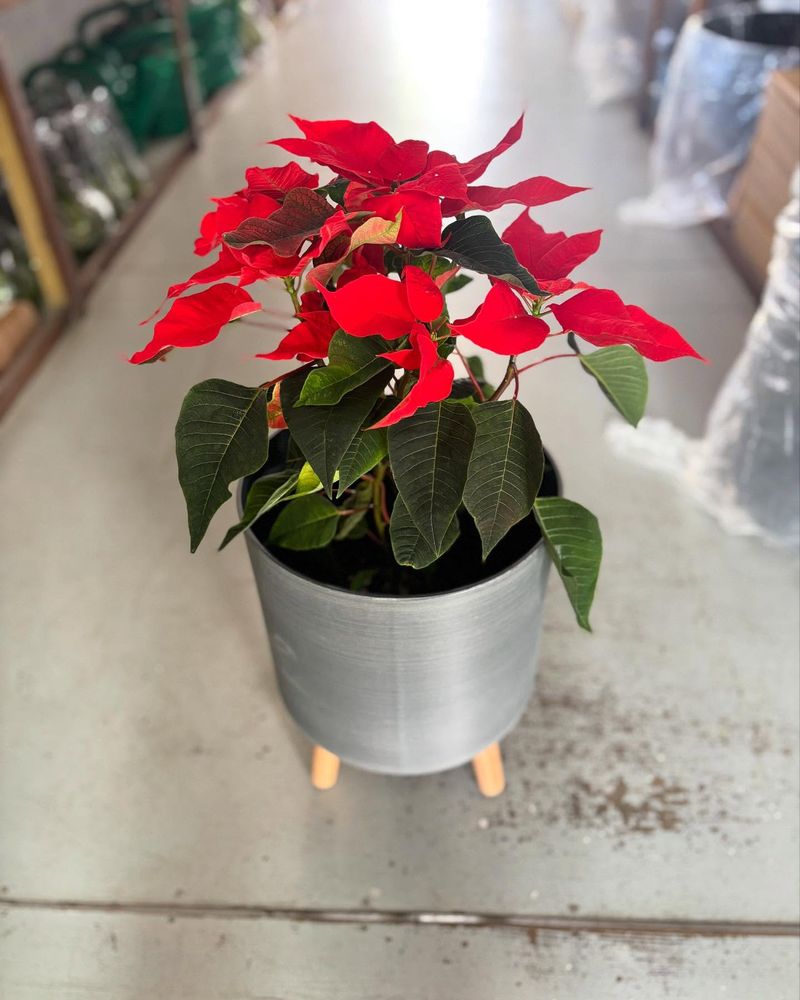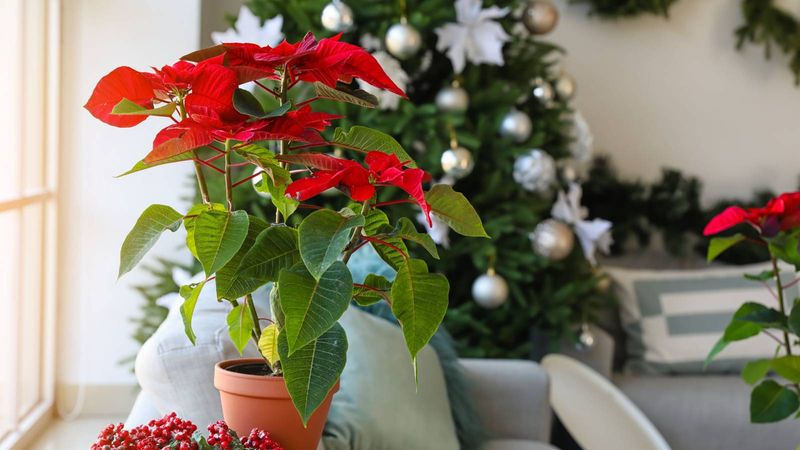New Jersey gardeners have a sharp eye when poinsettia season rolls in, and many of them swear by one simple color test to separate fresh plants from tired ones.
A truly fresh poinsettia has a richness that stands out even in a crowded display, and once you learn the trick, you start spotting it in an instant.
This small detail makes all the difference, helping holiday plants stay bright long after the decorations come down.
Checking The Tiny Yellow And Green Centers Is Crucial
Garden experts always peek at the tiny flower clusters in the middle of those colorful bracts.
When those little button-like structures glow with a bright yellow-green shade, you’ve found a winner.
Faded or brown centers mean the plant has already bloomed for weeks and won’t stay beautiful much longer.
Fresh poinsettias should have tight, unopened buds in the center rather than open, dusty flowers.
Look for vibrant coloring without any wilting or dropping petals.
Your plant will reward you with weeks of holiday cheer when you start with youthful blooms that haven’t peaked yet.
Deep Green Foliage Below The Bracts
A poinsettia’s true leaves grow below those showy red, pink, or white parts most people call flowers.
Rich, dark green foliage tells you the plant has been well-cared-for and isn’t stressed from poor watering or lighting.
Yellowing or pale leaves scream trouble and suggest the plant might drop foliage once you bring it home.
Run your fingers gently along the stems to check that leaves feel firm and stay attached.
Avoid any plant with bare stems or sparse greenery.
Healthy lower leaves mean strong roots and a plant ready to thrive in your New Jersey home throughout December and beyond.
Vibrant Bract Color Without Fading
Those colorful leaves that make poinsettias famous should practically glow with intensity.
Whether you prefer classic red, creamy white, or blushing pink varieties, the color needs to be uniform and rich.
Brown edges, pale patches, or washed-out hues indicate age or environmental stress that won’t improve after purchase.
Hold the plant up to natural light and examine each bract carefully, fresh ones have a slight sheen and feel slightly waxy to the touch.
Dull, papery bracts suggest the plant has been sitting too long or suffered from temperature swings during shipping to New Jersey garden centers.
No Yellowing At Leaf Margins
Flip a few leaves over and scan the edges for any hint of yellow or brown discoloration.
Crisp, evenly colored margins from tip to base indicate proper nutrition and careful handling.
Yellowing edges often signal root problems, overwatering, or nutrient deficiencies that will only worsen once the plant adjusts to your home environment.
Pay special attention to the oldest leaves near the bottom of the plant because even slight yellowing there warns of underlying issues.
Garden centers sometimes hide struggling plants behind healthier ones, so always inspect your selection from every angle before heading to checkout.
Soil Surface Shows Dark, Moist Color
Peek beneath the foliage at the soil line to check its color and texture.
Dark, evenly moist soil that isn’t bone-dry or waterlogged suggests the plant has received consistent care.
Crusty white deposits or pale, dusty soil often means irregular watering or mineral buildup from tap water.
Gently press the soil surface with your finger to test moisture levels, it should feel like a wrung-out sponge rather than soggy or crumbly.
New Jersey’s winter air can dry plants quickly, so starting with properly hydrated soil gives your poinsettia the best chance to transition smoothly into your home’s conditions.
Stems Display Firm Green Coloring
Strong stems with a healthy green tint support all those gorgeous bracts and leaves.
Bend a stem gently between your fingers to test for firmness without breaking it.
Soft, mushy, or discolored stems reveal root rot or disease that will quickly spread and destroy your plant despite your best efforts at home.
Watch out for stems that look shriveled, brown, or unnaturally pale.
These warning signs indicate serious problems that no amount of water or fertilizer can fix.
Robust green stems that resist gentle pressure promise a poinsettia that will stand tall and beautiful through all your holiday celebrations this winter season.







